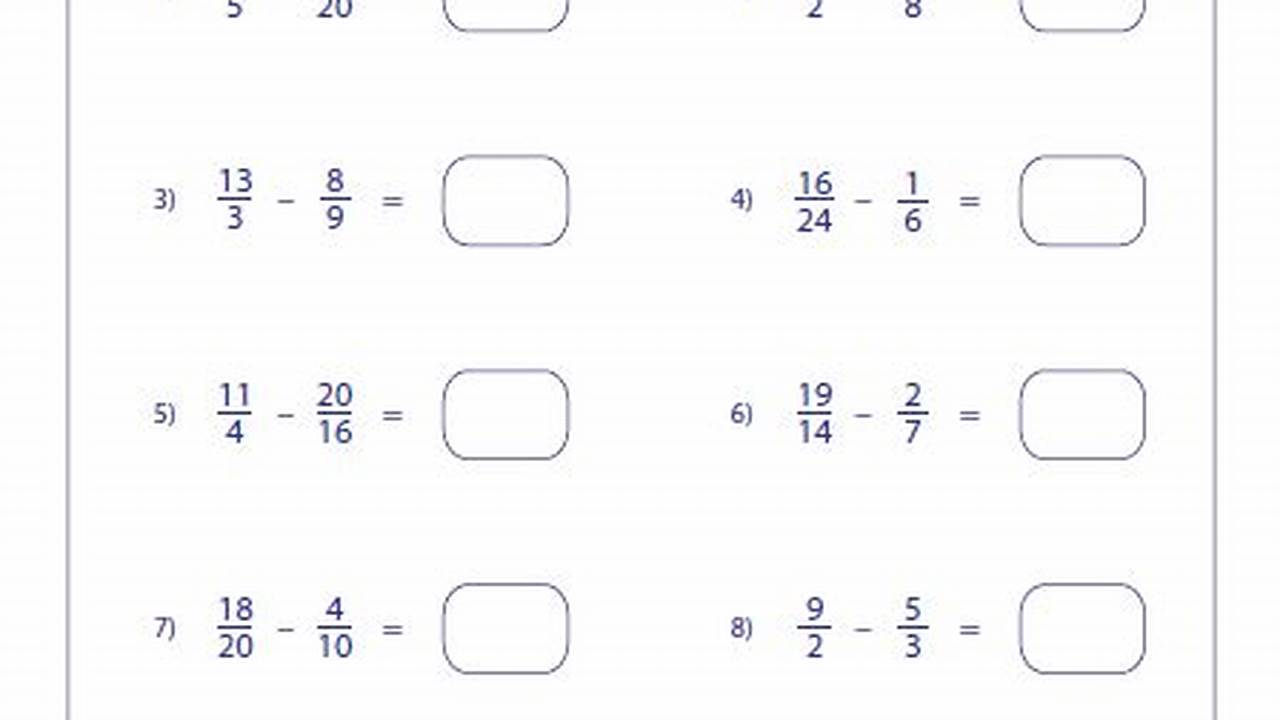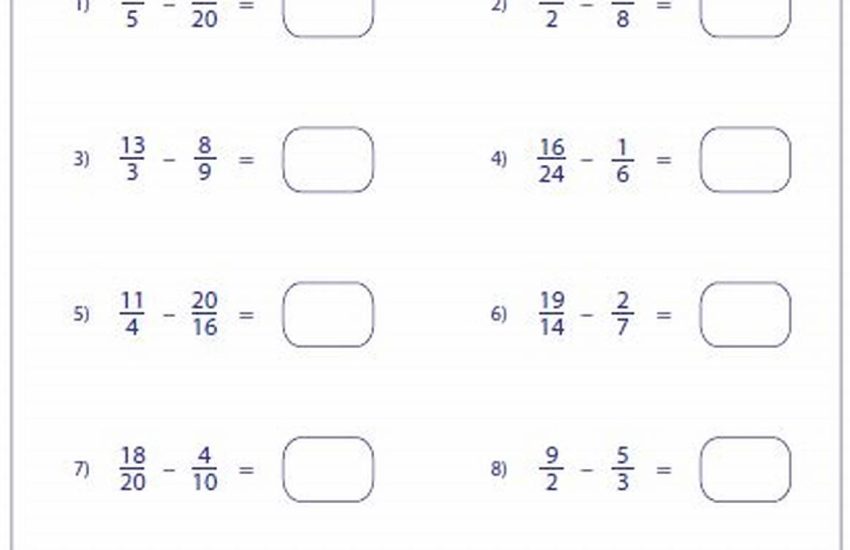
Struggling with subtracting fractions that don’t have the same denominator? Don’t worry, you’re not alone! It’s a common hurdle for many learners, but once you understand the core concept, it becomes much easier. Think of it like comparing apples and oranges – you need to find a common unit first!
Subtracting fractions is a fundamental skill that builds a strong base for future mathematical concepts. This article breaks down the process step-by-step, using clear examples and straightforward explanations. Get ready to conquer those fractions and boost your math confidence!
Mastering Subtracting Unlike Fractions
The key to subtracting unlike fractions is finding a common denominator. This means finding a number that both denominators divide into evenly. The easiest way to do this is to find the Least Common Multiple (LCM) of the two denominators. The LCM becomes your new common denominator!
Once you’ve found the common denominator, you need to adjust the numerators accordingly. Remember, what you do to the bottom of the fraction, you must also do to the top. Multiply each numerator by the same factor that you multiplied its corresponding denominator by to get the common denominator.
Now that you have two fractions with the same denominator, you can simply subtract the numerators. Keep the denominator the same. For example, if you have 5/8 – 1/4, find the common denominator (8). Then change 1/4 to 2/8. Now it’s 5/8 – 2/8 = 3/8.
After subtracting, always check if you can simplify the resulting fraction. Look for a common factor that divides both the numerator and the denominator. If you find one, divide both by that factor to reduce the fraction to its simplest form. For example, 4/8 can be simplified to 1/2 by dividing both by 4.
Let’s consider another example: 2/3 – 1/5. The least common multiple of 3 and 5 is 15. So, we convert 2/3 to 10/15 (2 5 and 35) and 1/5 to 3/15 (1 3 and 53). Now we subtract: 10/15 – 3/15 = 7/15. Since 7 and 15 have no common factors, the fraction is already in its simplest form.
Practice makes perfect! The more you work with subtracting unlike fractions, the easier it will become. Try different examples, look for patterns, and don’t be afraid to ask for help when you need it. With a little effort, you’ll be a fraction-subtracting pro in no time! Keep practicing, and youll find working with these numbers becomes second nature. Now go conquer those fractions!
